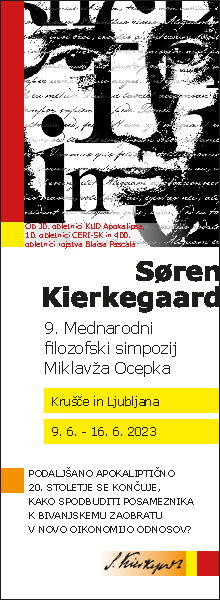 From the book:
From the book:
"Resume
Death has been a central subject of interest and fascination since the beginning of human history. Questions pertaining to this mysterium tremendum et fascinans have not changed significantly over the last few thousand years; we only encounter certain variations in responding to the question of death. It is the human being’s temporary state of mind and that of the times, reflecting a certain restlessness, dissatisfaction, hopelessness, anxiety and even resignation, all of which are due to effects of mass culture, consumerist society and man as homo economicus and homo consumericus, which serve as the motive of inspiration in dealing with the problem and meaning of the life and death of an individual. The author’s intention – perhaps not too presumptuously – is to point to certain phenomena and issues that often go unnoticed in the theoretical reflection of culture and society, mainly in attempts to interpret the image of death and its taboos, as well as the so-called de-tabooing, which often gives little regard to the category of the subject and its internal experience.
My monograph, Kierkegaard and the Image of Death in the Light of the Present Age, is an analysis of death, the meaning of death and life, the fear of death, anxiety, hopelessness, the so-called culture of death, as well as the phenomenon of "dark tourism", through the prism of Søren Kierkegaard’s thought. The serious consideration of death is becoming increasingly less common as a topic of conversation and personal reflection through a "de-tabooing" of death, especially due to the nature and frequency of its portrayal in mass media.
My monograph offers a new contribution to seriously reflectiing on death, and thereby attempting to diagnose maladies of our society and Western culture by pointing to symptoms that urge us to open up a debate on the spiritual and existential crisis of man. First, the book presents a reflection on the side-lining of death to the periphery of interest not only at the individual level but also from society; and second, it is an exploration on the fascination with death, dying, torture and suffering as displayed by dark tourism. Dark tourism has been defined as tourism involving traveling to sites associated with death, suffering, tragedies and mourning. This phenomenon has been present since ancient Rome, but it has risen in popularity and (mis)use for commercial purposes at the expense of reverence, ethics and morality. We subject dark tourism to an autopsy in terms of the tourists or so called thanatourists’ motivation and postulate a hypothesis on a sui generis analogy to the medieval ars moriendi. Following Kierkegaard’s views on the categories of passion [Lidenskab], earnestness [Alvor] and inwardness [Inderlighed], I show that there is a contrasting approach involving a "false" passion and "desire" to come closer to death and get to know it – but from a safe distance. I ask whether it is even possible to come to know and understand death. I take inspiration from Kierkegaard’s view that death is inexplicable and undefinable, but we nevertheless should try to articulate it and see it from our perspective that will be reflected in our own lives. In his discourse At Graveside he states that the explanation of death discloses the state of the explainers innermost being. Kierkegaard ascribes an educational dimension to death, thus in re-interpreting dark tourism, we come to a conclusion that it may represent an outline on how to view death as a teacher."



